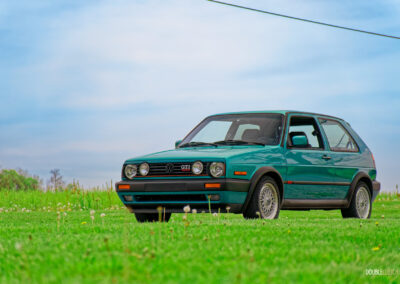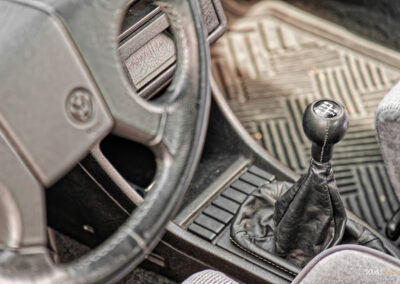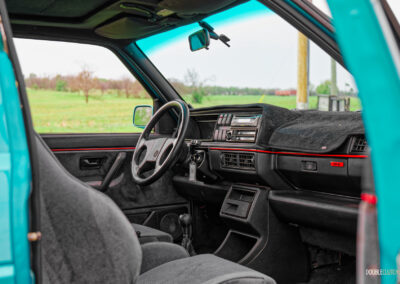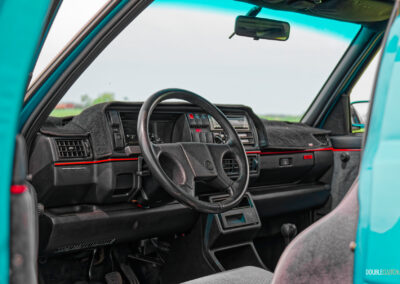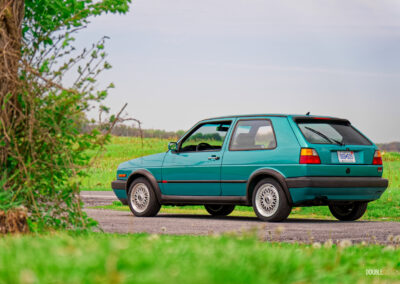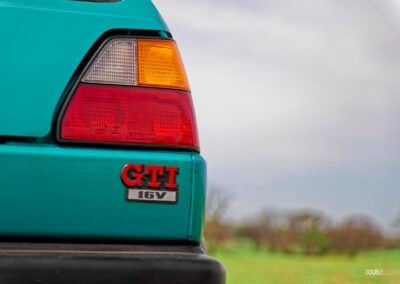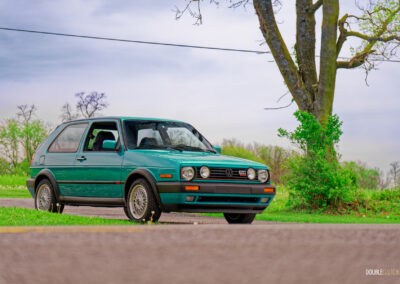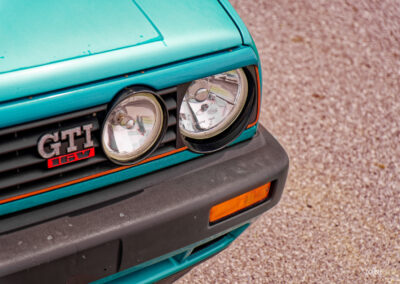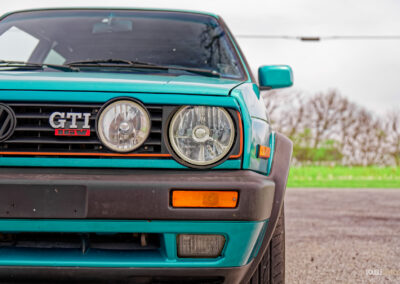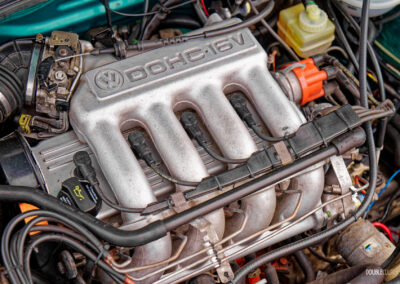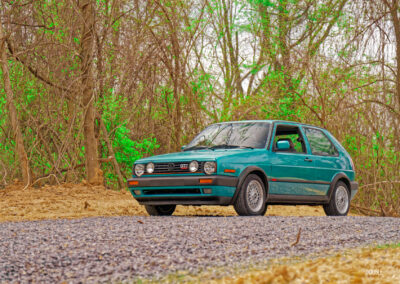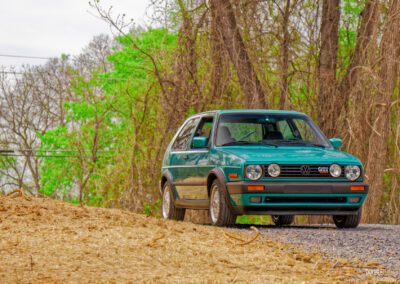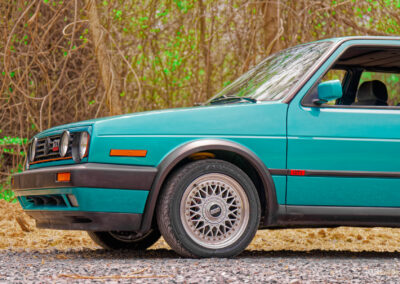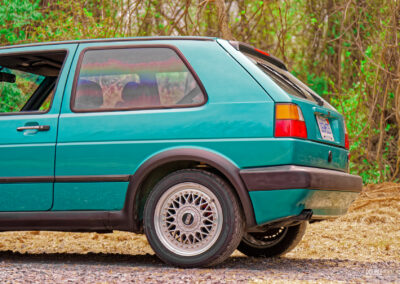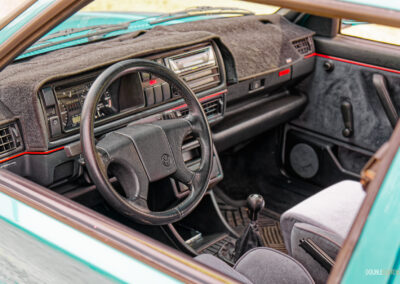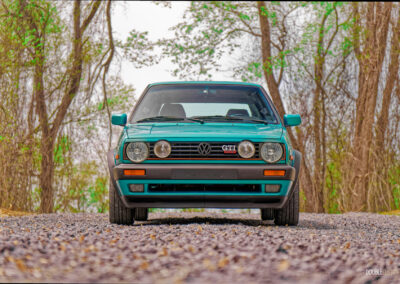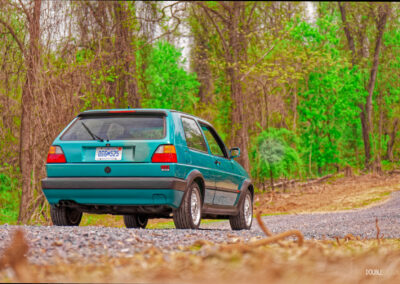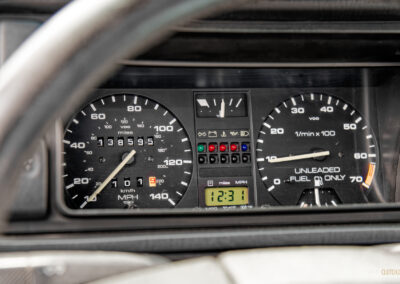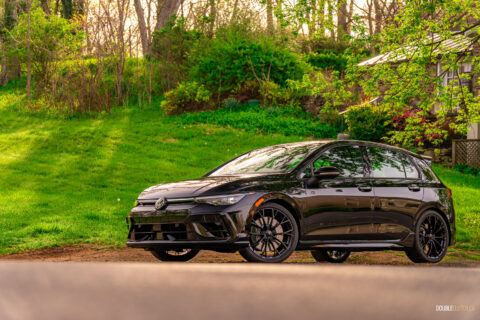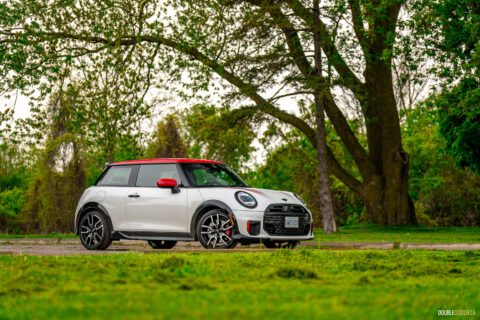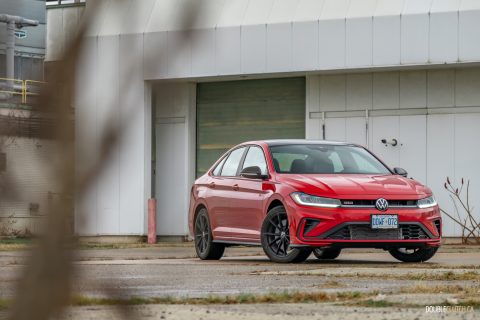SOMEWHERE IN W.V. – I’m not sure exactly where I was, but it was some winding rural road in West Virginia on a beautiful spring day. I had just flicked this lovely 1992 Volkswagen GTI over a crest around a fast left-hander. I had my foot to the floor, winding up the high-strung 16-valve engine and slotting it into fourth gear. I was beaming, laughing, overjoyed, and barely doing highway speeds. I was having the best time I’ve had piloting a car in a long time—which is important, because just 45 minutes prior to this moment, I was in a new Golf R with triple the power of this old GTI, going full-tilt around Summit Point’s Raceway’s fast Jefferson Circuit.
The day was supposed to be all about Volkswagen’s updates to the “MK8.5” GTI and Golf R, putting us on a winding voyage through Virginia to Summit Point for some track time, lunch, then more track time. In addition to the shiny new stuff, Volkswagen also brought out an exceptionally tidy MK1 GTI—and Monty, this lovely, final-year, big-bumper MK2 GTI 16V, finished in so-90s-it-hurts Montana Green. After screaming around the track in a factory-built weapon, I thought it’d be a nice palette cleanser. Monty turned out to be much more than that.
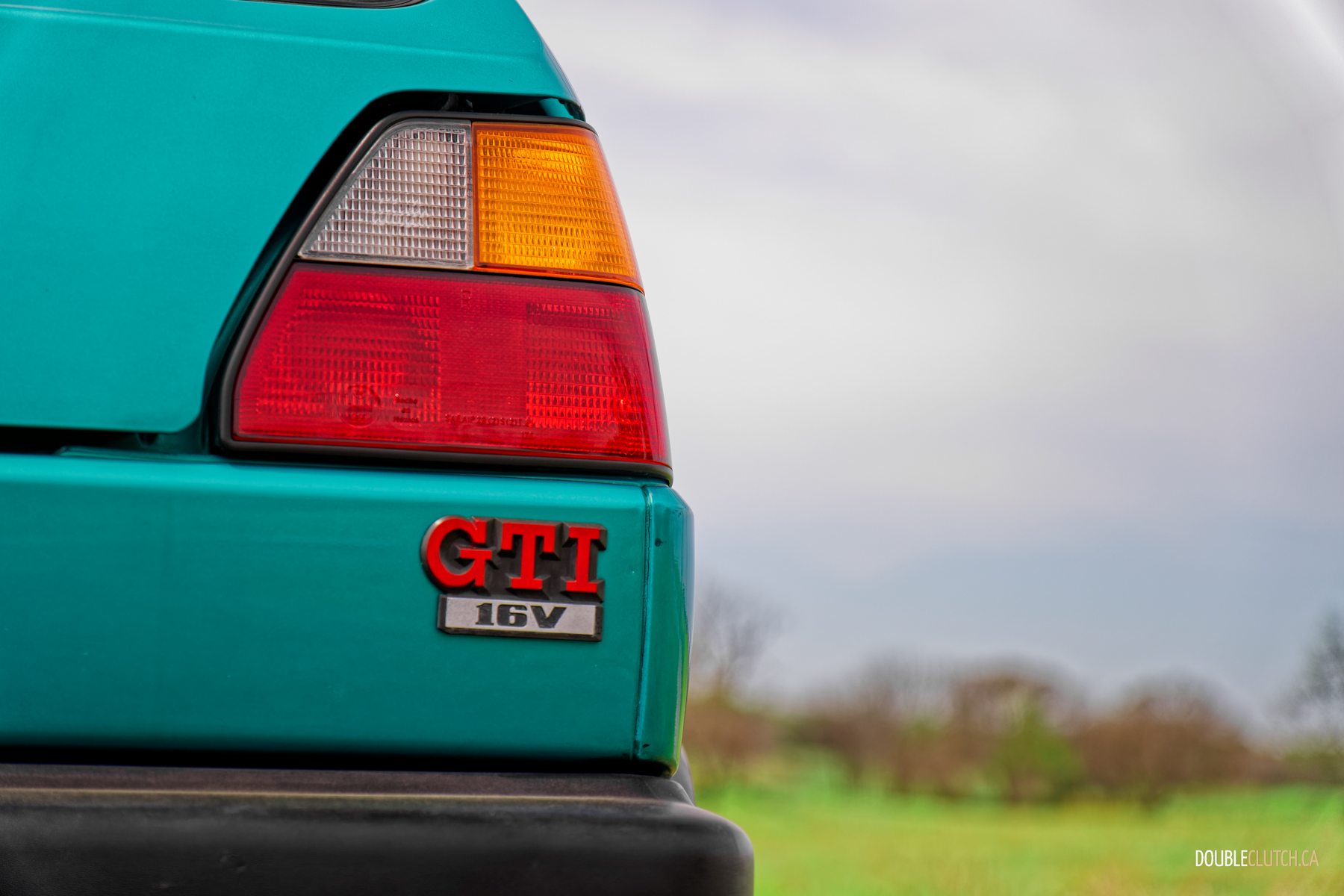
They’ve had their comeuppance and long since been romanticized by enthusiasts, but the MK2 Golf GTI wasn’t well-received following its debut in the 1980s. It was by all means a terrific car, but it lamented in the massive shadow cast by the tiny yet hugely influential MK1 Golf. See, the inaugural GTI wasn’t just successful; it was a revolution, spawning a whole genre of cars. Not since the original Mini Cooper had the idea of a fun, front-wheel-drive hatchback been viable, and by the time the MK2 GTI came around, everyone had caught on and caught up to Volkswagen.
Necessity dictated that the updated MK2 Golf had to be a larger, more comfortable, more practical car. When it debuted, it was indeed better to live with day-to-day, but this had the unfortunate side effect of making the sporty Golf GTI a worse driver’s car. The crisp lines penned by vaunted Italian design firm Giugiaro were softened for the MK2, the suspension was dulled, it had put on quite a bit of weight, and it didn’t gain much of any power. Not only was this follow-up all-around a less enticing experience, it was slower to boot.
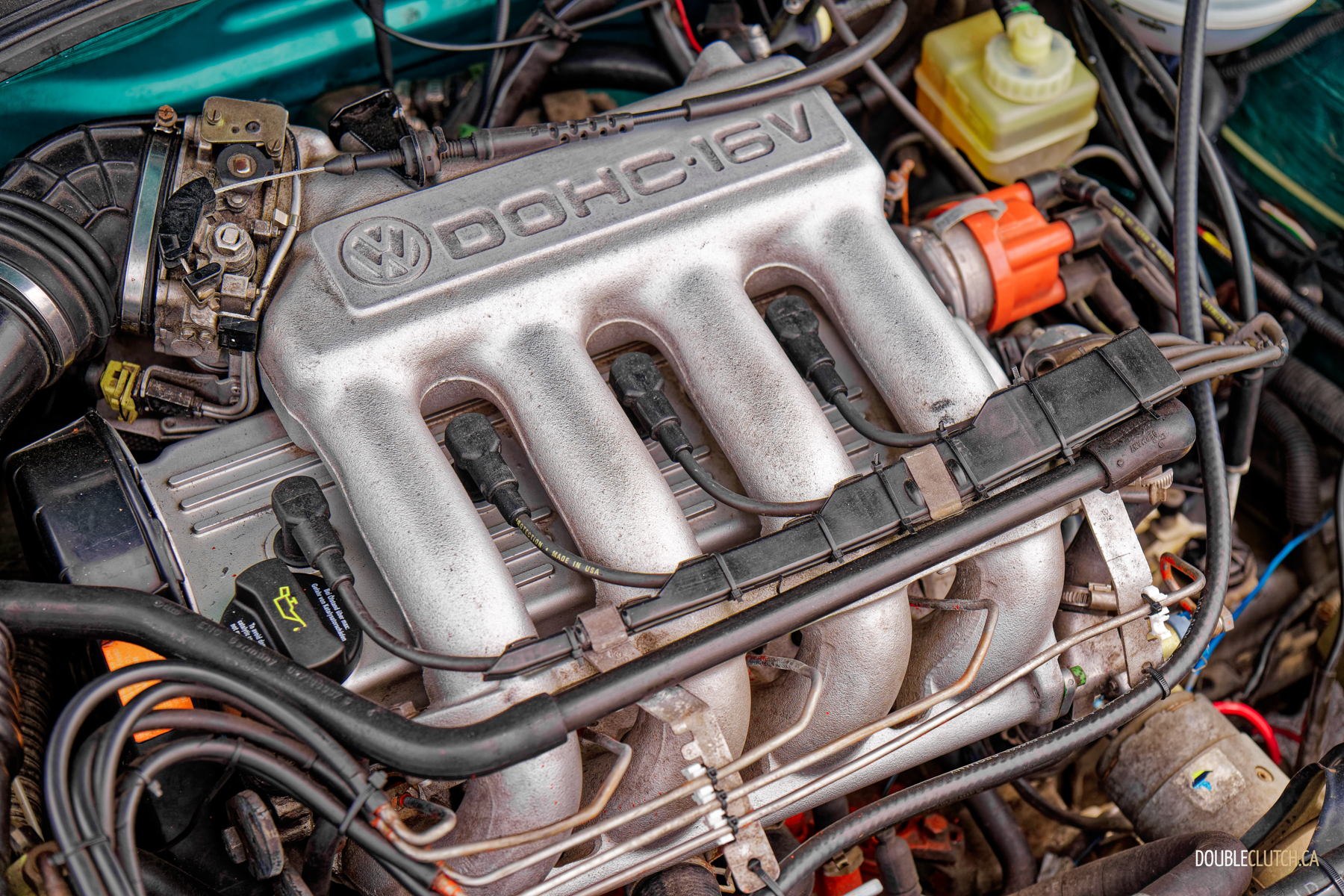
Something had to be done. So, VW quickly developed an updated engine with a fancy new 16-valve cylinder head that was so in vogue at the time—and proudly employed by all of its new competitors—to cure the GTI’s chronic blandness in 1987. It pretty much only made things worse. Yes it made a little more power, but unlike the old eight-valve engine which felt punchy due to its strong mid-range torque, the new engine felt gutless. It was as if it needed to be revved to the moon before anyone showed up for work. The added weight over the nose only dulled the already limp handling, too.
Adding insult to injury, the 16-valve head was considerably more expensive and fussier to maintain; it wasn’t bad, but the eight-valve could be kept running by a caveman with a big stick, and anything else was going to be a step backwards on that front. After a couple of years, VW brought back the old eight-valve engine alongside the new one as a lower-cost option. It sold quite a bit better, despite the popularity of 16-valve engines everywhere else. Even to this day, most of the classic VW enthusiasts I personally know know swear by the simplicity and punchy nature of the eight-valve, and would prefer them even if pricing didn’t favour them.
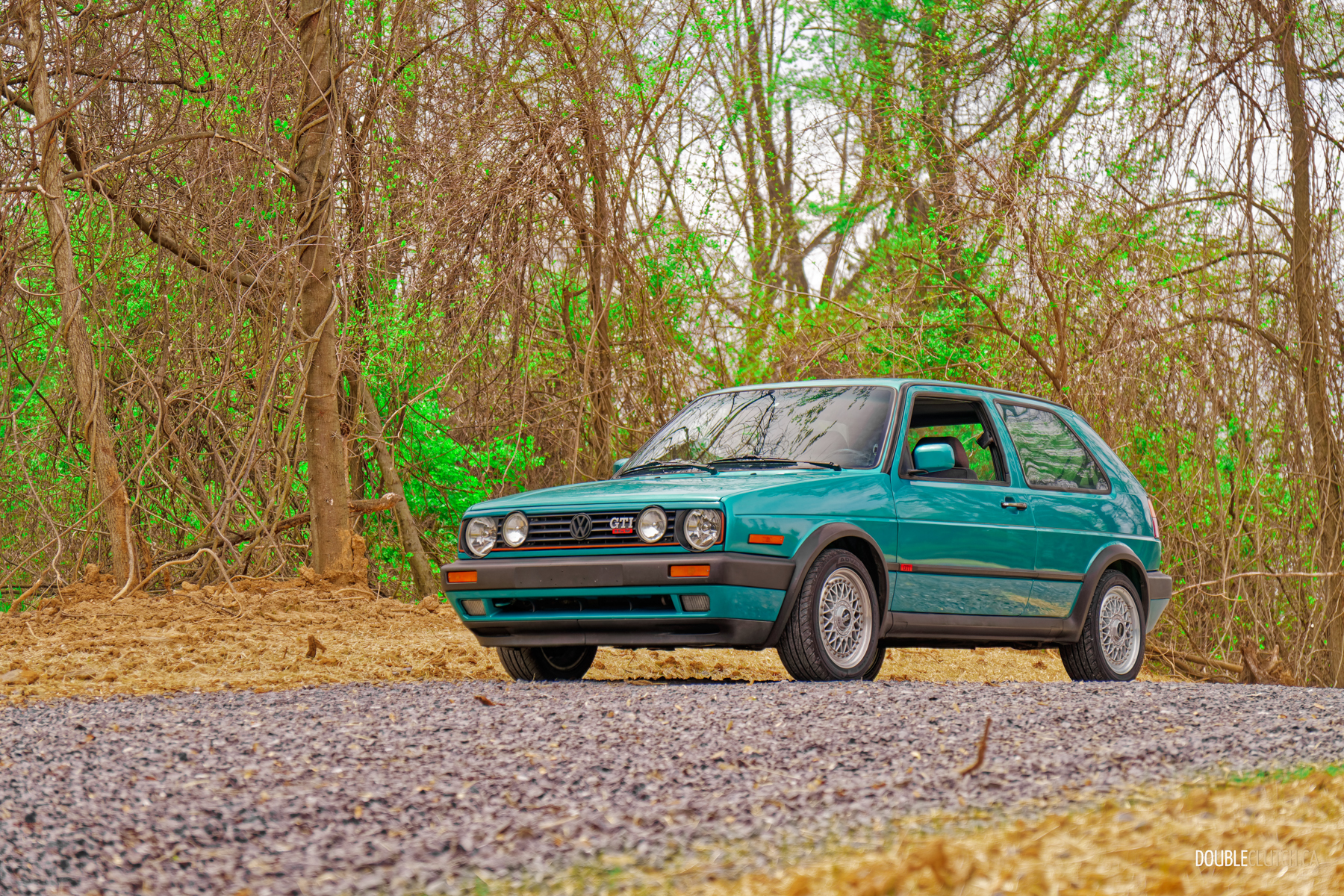
But Volkswagen kept at it. For 1990, the GTI received some serious updates to breathe life into the languishing MK2 16V. First, the engine displacement was increased from 1.8 to two litres, bringing total output to 134 horsepower and 133 pound-feet of torque. Neither of which were huge increases, but they were enough to wake things up and bring it in line with the rising tide of competitors from across the Pacific.
Second, with the repealing of the unfortunate sealed-beam headlight law in the US, the characterless rounded-rectangle lights were replaced by a quadrant of European-style circle lights. This combined with new, larger, more angular bumpers gave the car a far more distinct style. Three-piece BBS wheels were standard to give the cars some serious visual attitude, because BBS wheels look amazing on everything. Of all the unloved MK2 GTIs, these later-model examples are by far the most desirable today, especially in the rare Montana Green that was only available for the final 1992 model year. These cars are affectionately nicknamed Monty.
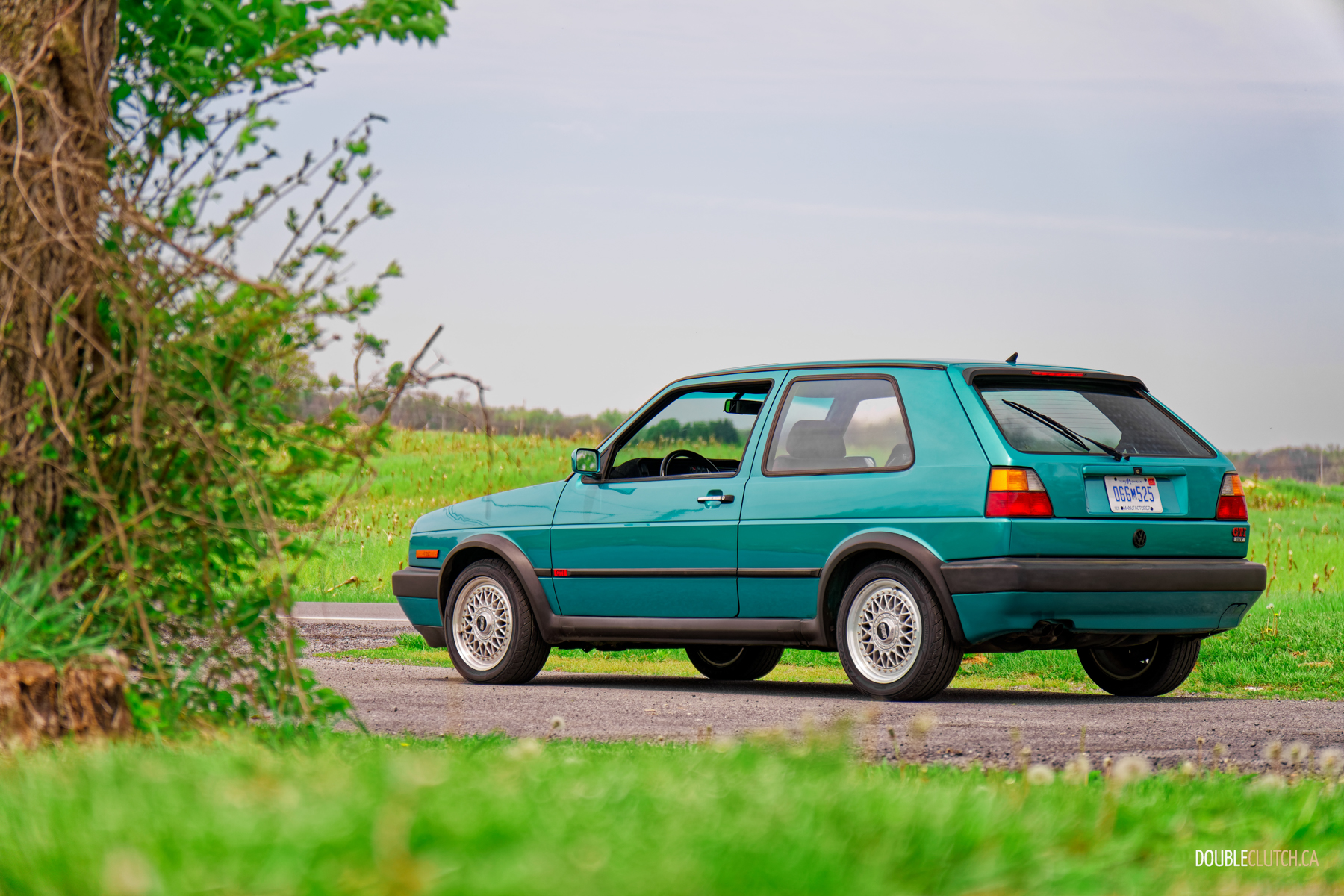
I was more curious about this Monty than the Mk1 GTI next to it, simply I’ve already spent quite a bit time with one—and frankly, there was a bit of a lineup to check it out, and I didn’t want to wait. This MK2, as is tradition, wasn’t getting as much attention, and I mostly wanted to see if my favorite VW was as much of a lame duck as everyone says it is. Plus, I really wanted to mellow out after hurling a shiny new Golf R into a blind, off-camber, decreasing radius corner at over 200 km/h. Speed sneaks up on you in those newfangled cars and I wanted to feel something.
This is the first time in my life where I haven’t owned a car that was older than me. I can’t stress enough how comforting it was to plop myself into the cloth Recaro seat and slam the thin door of an antique jalopy. Nothing you can buy today has anywhere close to the visibility of this angular fishbowl, and you don’t realize how reassuring that is until you’re away from it for a while. The pillars are thin, only serving to hold up the roof, not the whole weight of the car in a rollover. The waistline is low, and you sit high overlooking the flat hood. There’s nothing to set up; there’s no pairing your phone or drive modes to fiddle with. Twist the key, crank the window down, and go. Life is simple. Life is good.
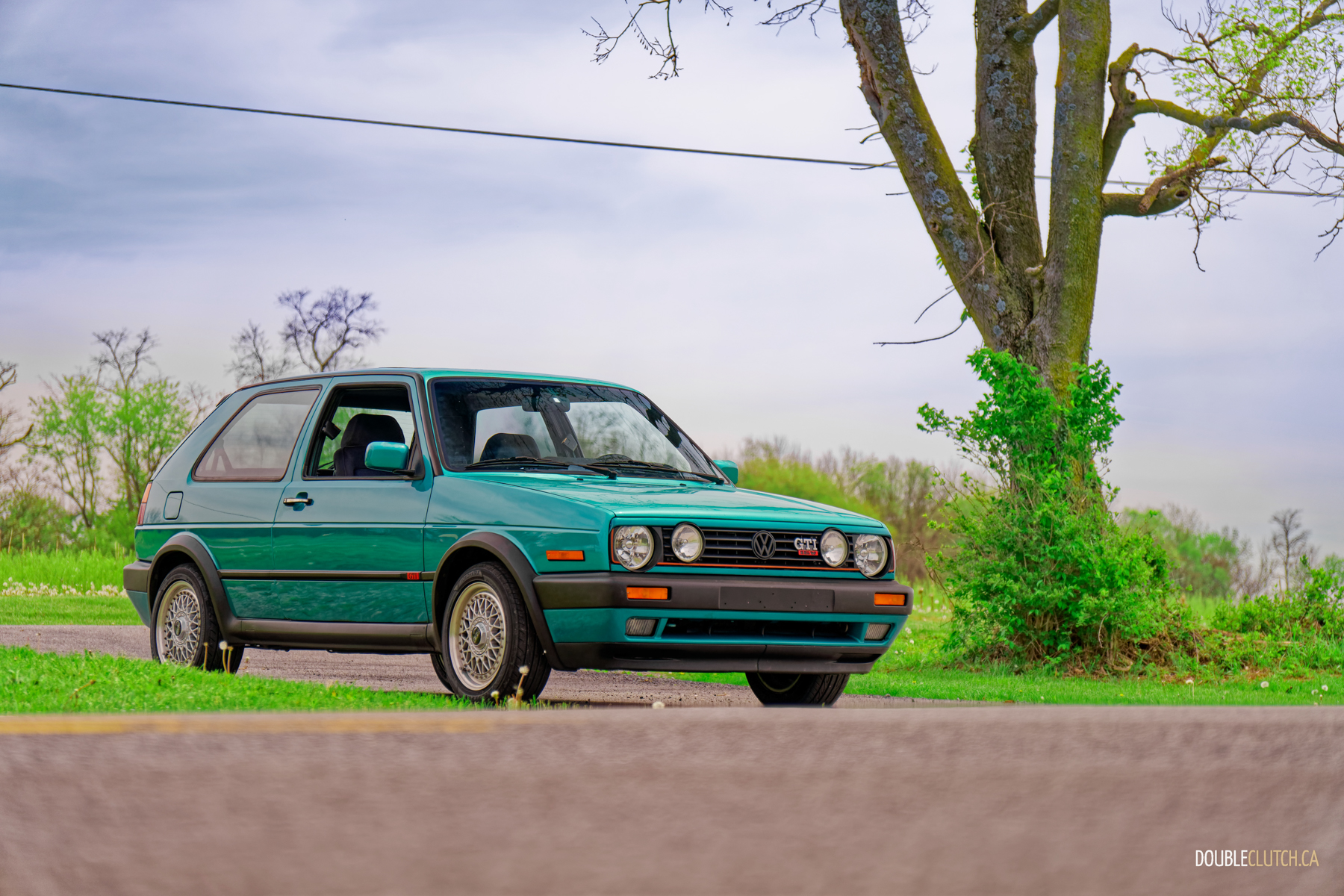
You’d think going from 328 to 134 horsepower would be a let down, but it was a relief. Where the Golf R, especially with its new very serious looking Black Package, is a potent instrument that needs to be handled with some care, this GTI redefines the word toy. It’s just pure, innocent fun, and you can use all of its modest capability all the time with relatively reckless abandon. Yes, it doesn’t have quite the mid-range shove of the MK1, but it’s not gutless. It has a very linear powerband that, very much unlike the old eight-valve, doesn’t run out of breath at the top of the tach. It’s flexible, more than usable enough at low speeds, and happy to be wrung out, backed with a satisfying mechanical intake thrum and sharp exhaust bark.
This MK2 GTI is a touchy-feely thing. All the touches feel as though they’re imbued with an intrinsic rightness. Everything is direct, light, intuitive, and immediately digestible. The feel through the thin vinyl steering wheel is organic, with an eager on-center feel that begs you to chuck it through a corner. The throttle response is similarly crisp, the shifter is light and long in its travel but not awkwardly so, the clutch is easy to read, and the brake response is a touch on the overboosted side but reassuring nonetheless.
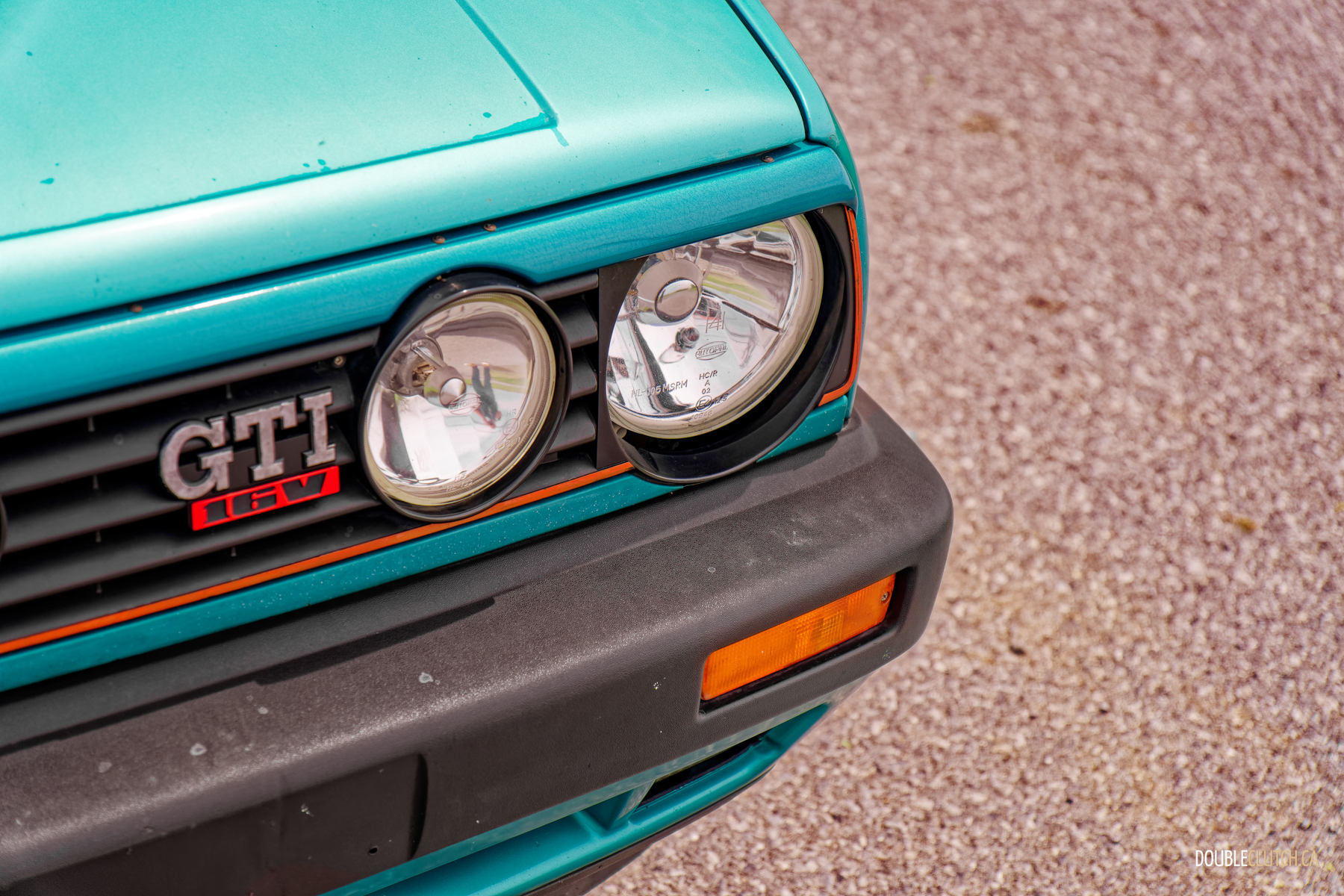
In fact, what stuck out the most to me was how similar it felt to the brand-new GTI I also sent around Summit Point. The way the nose darts into a corner, the throttle tip-in, the touchy brakes, even (to a lesser extent) the sound of the thing, it all felt as though there’s a deliberately familial lineage that’s been carefully weaved through to the modern day. All of the criticisms that dogged these cars has long since faded away, and now it’s just a charmer that’s hilarious good fun to have a fling with.
More often than not, a manufacturer bringing out their heritage vehicles at an event ends up being a quiet indictment of driving sensation that’s been abandoned in pursuit of refinement. But Monty only reaffirmed to me that, for all their foibles big and small, Volkswagen has never lost sight of what made the GTI special. They couldn’t catch lightning in a bottle twice, but in an almost ritualistic fashion and with the same ebb-and-flow of acclaim and condemnation over the ages, never stopped trying. I’m glad they didn’t, because this 1992 Volkswagen Golf GTI was a surprise treat. More power, more speed, more comfort are all A-OK, but Monty here reminds us it’s imperative we don’t lose sight of the joy of driving.

